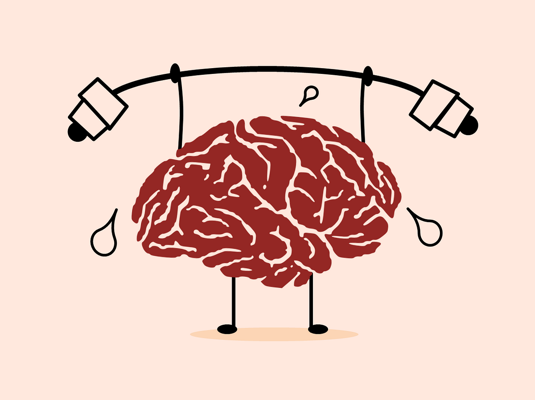Parkinson’s disease (PD) is most commonly associated with physical symptoms, such as tremors, rigidity and impaired posture. However, the impact of PD often goes far beyond physical impairment. The neurodegenerative disorder can also cause or increase the risk of a variety of non-motor symptoms, including depression, anxiety, impaired cognitive function and more.
While mental health issues are primarily treated with medication and psychotherapy, there is a growing body of research that suggests regular physical exercise may also have a role to play in supporting mental wellbeing in People with Parkinson’s (PwP).
In this article, we’ll explore some of the ways physical activity may help people with PD better manage non-motor symptoms.
1. Reduce depressive symptoms
Depression is one of the most common non-motor symptoms of PD. It affects about 30%-40% of all people with PD, yet only 20% of people seek treatment for it (1).
In the general population, it’s well documented that exercise can reduce and even prevent depressive symptoms thanks to the release of feel-good endorphins that take place during physical activity, as well as the stress-relieving, confidence-building and social elements of working out.
Could exercise help alleviate depression for people with Parkinson’s (PwP) ? In one study (2), researchers split PwP into two groups: an early-start group, which underwent a rigorous formal group exercise programme for one hour, three days a week for 48 weeks; and a delayed-start group, which participated in the same programme but only for weeks 24-48. At the end of the programme, participants in the early-start group reported significantly fewer depressive symptoms, compared with the delayed start group.
Depression can occur when motor symptoms prevent PwP from engaging in their normal hobbies and normal daily routines. Many studies have shown that exercise can help improve motor function, muscle strength, balance and gait – all of which are crucial for living a safe, healthy, and independent lifestyle. Therefore, regular physical activity may indirectly combat depression by better enabling PD patients to participate in the activities of daily life (3).
2. Boost cognitive function
The same changes in the brain that affect motor function can also lead to slowness of thought and memory issues. About 30% of people with PD have dementia (4), while cognitive impairment of a lesser severity is also common.
While more research is needed to understand the full effect of exercise on cognitive function, there are a number of studies that indicate physical activity can help boost mental processing in PD patients. In a study published in PLoS One (5), researchers analysed eleven studies comprising 508 patients to learn more about how physical activity affects attention, executive function, speed of processing and memory. They discovered that any form of exercise had a positive effect on executive function, attention and memory compared to no exercise, although no benefits were seen for speed of processing.
3. Improve sleep quality
Sleep disorders are extremely common among people with PD. Studies show that about 50% of PwP have insomnia (6), 14.7% have REM sleep behaviour disorder and 8% have excessive daytime sleepiness. The incidence rate of sleep disorders tends to go up as PD progresses.
In the general population, it’s widely accepted that physical activity can significantly improve sleep quality and there are a few studies that suggest it could be a similar story for individuals with PD. In one study (7), participants who engaged in a six month programme of three 70-minute sessions per week of resistance training, balance and motor coordination and aerobic fitness reported enhanced sleep and functional abilities compared to 17 PD control participants who did not exercise. In another study (8), people with mild- to moderate- stage PD reported improved sleep and significant improvements in quality of life after taking part in 36 group sessions of aerobic conditioning and muscular strengthening, which took place three times per week for three months.
Takeaway
The non-motor symptoms of PD can have just as big an impact on a person’s quality of life as motor symptoms. While the current literature suggests that regular physical activity may have a positive impact on mental health in PD patients, more research is needed to understand the relationship between exercise and the non-motor symptoms of PD.
Here at Orbit, our digital health solution, Neptune provides you with important insight into how your exercise, diet, medication and other lifestyle factors could shape your symptom control. To be first in line to have access to our innovative solution Neptune, join the waitlist today!
To get to know more about Neptune, visit here now!
Sources
- Depression in Parkinson’s disease: Health risks, etiology, and treatment options – PMC
- Effects of a formal exercise program on Parkinson’s disease: A pilot study using a delayed start design
- Effectiveness of physical activity on patients with depression and Parkinson’s disease: A systematic review – PMC
- The epidemiology of dementia associated with Parkinson disease
- Effects of physical exercise programs on cognitive function in Parkinson’s disease patients: A systematic review of randomized controlled trials of the last 10 years
- Psychiatric aspects of Parkinson’s disease – PMC
- Effect of a multimodal exercise program on sleep disturbances and instrumental activities of daily living performance on Parkinson’s and Alzheimer’s disease patients
- Impact of an exercise program on physical, emotional, and social aspects of quality of life of individuals with Parkinson’s disease



